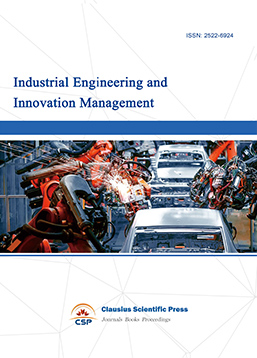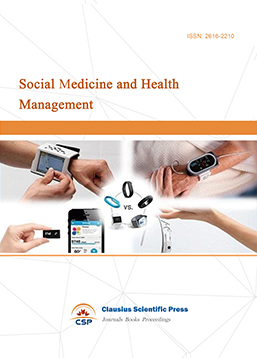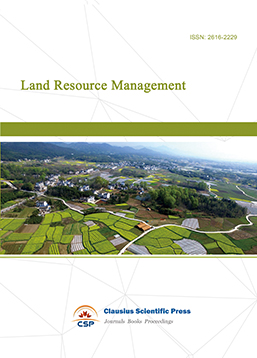Investigation on the Application of Cost Management in Operational Efficiency and Performance Evaluation
DOI: 10.23977/msom.2023.040502 | Downloads: 462 | Views: 6073
Author(s)
Jun Zhang 1, Xiaofang Huang 1
Affiliation(s)
1 Philippine Christian University, Manila, Philippine
Corresponding Author
Jun ZhangABSTRACT
With the intensification of global business competition, enterprises are increasingly focusing on improving operational efficiency to improve performance. Operational efficiency refers to the ratio of output to input in the utilization of resources by a company. Performance evaluation measures the performance of a company in achieving goals and providing value. Nowadays, improving operational efficiency and accurately evaluating performance are crucial for business success. Cost management is one of the important methods to improve operational efficiency and achieve excellent performance. Through cost management, enterprises can better understand resource utilization, identify waste and redundancy, and make targeted improvements. This article used the EVA (Economic Value Added) method to study the impact of cost management on operational efficiency and performance evaluation. Through data analysis, it was found that the economic value after cost management was 1.07775 million yuan. This numerical value was positive, demonstrating the value and effectiveness of the constructed model and method in operational efficiency and performance evaluation. Cost management could also optimize resource allocation, reduce costs, and improve operational efficiency and performance evaluation.
KEYWORDS
Cost Management, Operational Efficiency, Performance Evaluation, Economic Value Added MethodCITE THIS PAPER
Jun Zhang, Xiaofang Huang, Investigation on the Application of Cost Management in Operational Efficiency and Performance Evaluation. Manufacturing and Service Operations Management (2023) Vol. 4: 12-20. DOI: http://dx.doi.org/10.23977/msom.2023.040502.
REFERENCES
[1] Liu Y, Chang R D, Zuo J, et al. What leads to the high capital cost of prefabricated construction in China: perspectives of stakeholders. Engineering, Construction and Architectural Management, 2023, 30(2): 805-832.
[2] Parker L D. The COVID-19 office in transition: cost, efficiency and the social responsibility business case. Accounting, Auditing & Accountability Journal, 2020, 33(8): 1943-1967.
[3] Costabile G, Fera M, Fruggiero F, et al. Cost models of additive manufacturing: A literature review. International Journal of Industrial Engineering Computations, 2017, 8(2): 263-283.
[4] Elghaish F, Abrishami S. A centralised cost management system: exploiting EVM and ABC within IPD. Engineering, Construction and Architectural Management, 2021, 28(2): 549-569.
[5] Radionova N, Skrypnyk M, Voronkova T. Dual nature of industrial enterprise cost management system. Baltic Journal of Economic Studies, 2019, 5(2): 184-190.
[6] Nagasawa S, Nagasawa M. Free riding, empire building, and cost management prior to and post municipal enterprise mergers in Japan. Asia-Pacific Journal of Accounting & Economics, 2021, 28(1): 94-116.
[7] Bondarenko S, Verbivska L, Dobrianskа N, et al. Management of enterprise innovation costs to ensure economic security. International Journal of Recent Technology and Engineering, 2019, 8(3): 5609-5613.
[8] Li H, Wang J, Wu L, et al. Optimal guaranteed cost sliding-mode control of interval type-2 fuzzy time-delay systems. IEEE Transactions on Fuzzy Systems, 2017, 26(1): 246-257.
[9] Hnatenko I, Orlova-Kurilova O, Shtuler I, et al. An approach to innovation potential evaluation as a means of enterprise management improving. International Journal of Supply and Operations Management, 2020, 7(1): 112-118.
[10] Markina I, Fedirets O, Sazonova T, et al. Formation of energy efficient strategy of enterprise management. Journal of Entrepreneurship Education, 2018, 22(1): 1-11.
[11] Drobyazko S, Barwińska-Małajowicz A, Ślusarczyk B, et al. Innovative entrepreneurship models in the management system of enterprise competitiveness. Journal of Entrepreneurship Education, 2019, 22(4): 1-6.
[12] Zeebaree S R M, Shukur H M, Hussan B K. Human resource management systems for enterprise organizations: A review. Periodicals of Engineering and Natural Sciences, 2019, 7(2): 660-669.
[13] Jia Y, Ge S, Wang N. Analyzing enterprise information system's feature use: a data-driven perspective. Information Technology & People, 2021, 34(1): 375-398.
[14] Yaduvanshi D, Sharma A. Lean six sigma in health operations: challenges and opportunities—'Nirvana for operational efficiency in hospitals in a resource limited settings'. Journal of Health Management, 2017, 19(2): 203-213.
[15] Taiwo J N, Agwu M E. The role of e-banking on operational efficiency of banks in Nigeria. Basic Research Journal of Business Management and Accounts, 2017, 6(1): 01-10.
[16] Chen Y, Lin B, Lu L, et al. Can internal audit functions improve firm operational efficiency? Evidence from China. Managerial Auditing Journal, 2020, 35(8): 1167-1188.
[17] Osazefua I J. Operational efficiency and financial sustainability of listed manufacturing companies in Nigeria. Journal of Accounting and Taxation, 2019, 11(1): 17-31.
[18] Gupta K, Raman T V. Intellectual capital: A determinant of firms' operational efficiency. South Asian Journal of Business Studies, 2021, 10(1): 49-69.
[19] Michie C, Andonovic I, Davison C, et al. The Internet of Things enhancing animal welfare and farm operational efficiency. Journal of Dairy Research, 2020, 87(S1): 20-27.
[20] Beracha E, Feng Z, Hardin III W G. REIT operational efficiency and shareholder value. Journal of Real Estate Research, 2019, 41(4): 513-554.
| Downloads: | 6614 |
|---|---|
| Visits: | 195174 |
Sponsors, Associates, and Links
-
Information Systems and Economics

-
Accounting, Auditing and Finance

-
Industrial Engineering and Innovation Management

-
Tourism Management and Technology Economy

-
Journal of Computational and Financial Econometrics

-
Financial Engineering and Risk Management

-
Accounting and Corporate Management

-
Social Security and Administration Management

-
Population, Resources & Environmental Economics

-
Statistics & Quantitative Economics

-
Agricultural & Forestry Economics and Management

-
Social Medicine and Health Management

-
Land Resource Management

-
Information, Library and Archival Science

-
Journal of Human Resource Development

-
Operational Research and Cybernetics


 Download as PDF
Download as PDF